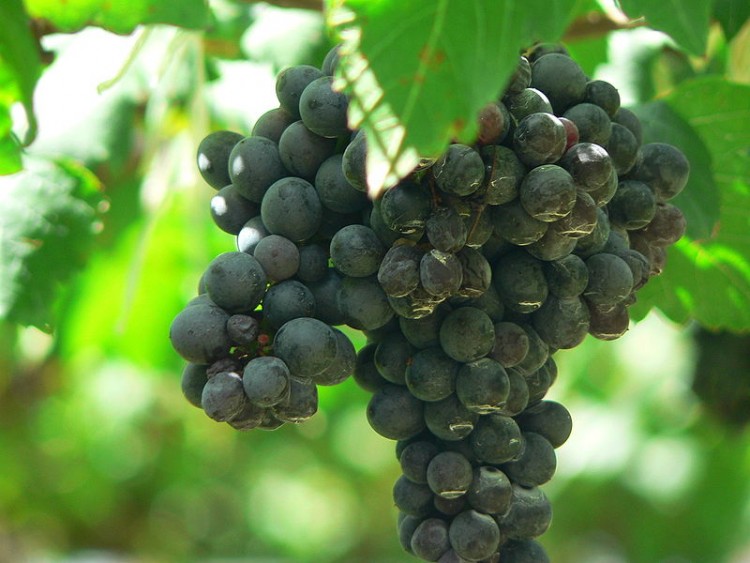7 Chardonnay Wines to Drink All May (Wine Spectator)
Tasting Highlights’ wine reviews are fresh out of the tasting room, offering a sneak peek of our editors’ most recent scores and notes to WineSpectator.com members.
The Mâconnais region is in the southern part of Burgundy, where you can find great-quality Chardonnay at a fraction of the price of top sites farther north. The appellations of Pouilly-Fuissé, St.-Véran and the various villages of Mâcon, among others, are great bets. They express an array of fruit and great acidity, perfect with food or just sipping on a warm spring day.

ALBERT BICHOT
Pouilly-Fuissé
Score: 90 | $30
WS review: Peach, anise, floral and lemon aromas and flavors are the hallmarks of this creamy white. Firmly structured and moderately long, with a sense of elegance and refinement. Drink now through 2023. 1,300 cases imported.—Bruce Sanderson
Why it’s of note: Albert Bichot sources grapes from hillside vineyards for this Pouilly-Fuissé. Some are steep, resulting in varied sun exposures and harvests that can last more than two weeks. The wine is vinified and aged in a mix of oak and stainless steel; the aging lasts 8 months, giving it a creamy texture and spice notes.

LOUIS JADOT
Pouilly-Fuissé
Score: 90 | $28
WS review: This is supple and infused with peach, apple, vanilla and wet stone flavors. Beautifully balanced, offering powerful apple notes on the extended finish. Drink now through 2023. 53,000 cases imported.—B.S.
Why it’s of note: Louis Jadot is one of the most established maisons in Burgundy. This particularly wine is widely available, making it one of the more ubiquitous white Burgundies on the market. It’s aged for six months in French oak casks, imparting baking spice flavors and structure. Overall, it’s an easy-drinking white, perfect for outdoor barbecues or rooftop parties.

CHÂTEAU DE LA GREFFIÈRE
Mâcon-La Roche Vineuse Sous Le Bois
Score: 89 | $16
WS review: This white reveals fine depth to the peach, melon, apple and mineral flavors. Succulent and refreshing on the lingering aftertaste. Drink now. 2,000 cases imported.—B.S.
Why it’s of note: Château de la Greffière has been in the Greuzard family for four generations. They also plant Aligoté, Pinot Noir and Gamay, as well as the Chardonnay that goes into this Mâcon bottling. The grapes come from the winery’s 30-acre vineyard, La Roche Vineuse, which has 30-year-old vines.

LOUIS LATOUR
Pouilly-Fuissé
Score: 89 | $29
WS review: A rich version, this displays peach, apple pie, anise and baking spice flavors. Broad and powerful, with light tannins gracing the finish. Drink now through 2022. 25,000 cases made, 18,000 cases imported.—B.S.
Why it’s of note: Louis Latour is also one of the top and most prevalent producers of Burgundy. This Pouilly-Fuissé comes from 30-year-old vines; it’s fermented and aged in stainless steel vats, keeping it fresh and bright, and goes through full malolactic fermentation, giving it richness.

DOMAINE GILLES NOBLET
Mâcon-Fuissé La Collonge
Score: 88 | $23
WS review: A mix of apple, lemon and earth flavors are appealing, kept focused by the bright acidity. Capped off by a juicy finish, this exhibits fine balance. Drink now. 1,500 cases made, 1,000 cases imported.—B.S.
Why it’s of note: Domaine Gilles Noblet is a family-owned winery that has been passed down for generations, focusing entirely on Chardonnay. This bottling’s grapes hail from the Fuissé commune, grown in clay-limestone vineyards. The wine was aged in stainless steel for eight to 12 months.

RÉSERVE DES ROCHERS
Mâcon-Chaintré
Score: 88 | $17
WS review: This is linear in profile, offering lemon, apple, anise and baking spice flavors. Vibrant, with a touch of quinine and a tactile sensation on the finish. Drink now. 980 cases imported.—B.S.
Why it’s of note: Réserve des Rochers is named for the famous limestone cliffs, or roches, of the area. The winery adopts sustainable viticulture practices, led by winemaker Isabelle Adoir-Pécoud. The commune of Chaintré is in the far south of the Mâconnais, just north of Beaujolais, and has stony calcareous limestone soils, with some clay deposits.

JOSEPH DROUHIN
St.-Véran
Score: 87 | $19
WS review: This white hits the right notes, from the apple and lemon flavors to the fine balance and length. Open and ready to enjoy. Drink now. 9,000 cases imported.—B.S.
Why it’s of note: Before St.-Véran became its own appellation, this wine may have been labeled “Beaujolais Blanc,” because the land overlaps with the northern part of the region. Maison Joseph Drouhin buys grapes and must from vineyard partners for this wine. The aging process is hands-on for the Drouhin team, with several tastings and technical analysis throughout six to eight months to ensure quality.




























